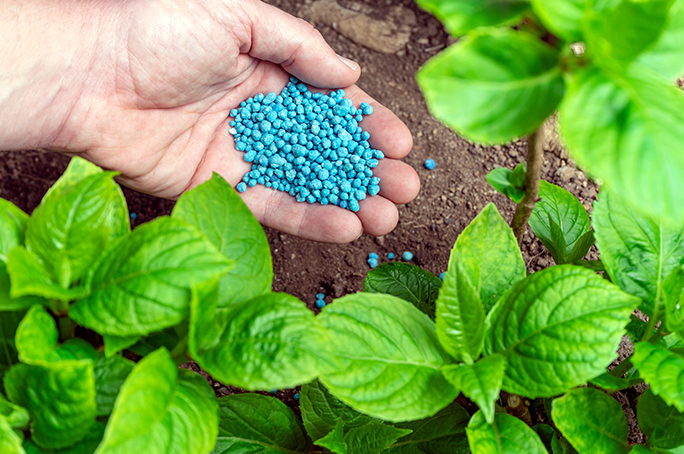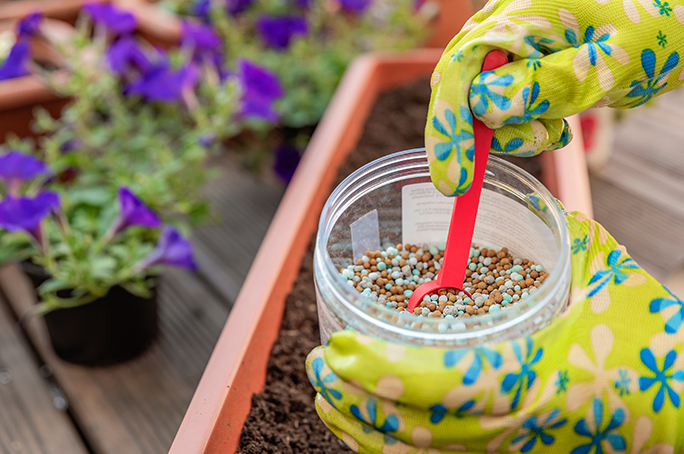Are you having trouble understanding your plants, as if they’re communicating in a language you can’t comprehend? Well, no need to worry about that any longer because today we’ll unlock the mystery of the N-P-K ratio and help you keep your plants healthy and thriving.
Simply put, the N-P-K ratio is the holy trinity of nutrients that plants need for optimal growth: nitrogen, phosphorus, and potassium (and yes, the “K” does indeed stand for potassium, go figure).
The Importance of the N-P-K Ratio for Different Plants and Crops

The N-P-K ratio plays a vital role in the growth of plants and crops. Every fertilizer and soil amendment has a unique nutrient composition, and the N-P-K ratio reflects the specific proportion of each nutrient in it. For example, a fertilizer with an N-P-K ratio of 3-3-3 would have 3% nitrogen, 3% phosphorus oxide, and 3% potassium oxide by weight.
Each nutrient is essential for healthy growth, from strong roots to lush foliage and disease resistance, regardless of whether you’re cultivating juicy tomatoes or leafy greens.
N-P-K Ratio for Common Crops

The ideal N-P-K ratio can vary widely depending on plants’ needs, soil conditions, and growth stages. However, here are some general guidelines for common crops:
- Leafy vegetables. Spinach, lettuce, wild cabbage, and other leafy greens require a higher nitrogen (N) ratio to encourage leaf growth. The ideal N-P-K ratio for these crops is around 12-4-8 or 8-4-4.
- Fruiting vegetables. Vegetables that produce fruits, like tomatoes, peppers, and cucumbers, require more potassium (K) to support fruit development. When choosing plant food for them, go for the N-P-K ratio of 2-8-4 during the blooming phase and 6-2-4 during fruiting.
- Root vegetables. If you’re growing carrots, potatoes, or any other root vegetables, keep in mind that they require a balanced ratio of all three macronutrients with more emphasis on potassium and phosphorus to promote root growth. They’ll be perfectly happy with the 1-2-2 or 4-4-4 ratio.
- Flowers. Try to avoid using nitrogen-rich fertilizers. They promote lush foliage but hinder flower development. For the latter, you’ll need phosphorus-rich plant food with a ratio of 1-3-2. You can also use nitrogen-free fertilizers (0-10-10) but only when the plant is young and hasn’t started forming buds.
- Trees. A balanced N-P-K ratio such as 10-10-10 is a good starting point, but you may want to pick a fertilizer with slightly more phosphorus to promote strong root development. Keep in mind that the optimal ratio may vary depending on the type of tree and its growth stage.
- Shrubs. An N-P-K ratio that includes equal proportions of nitrogen, phosphorus, and potassium is suitable for most shrubs. Placing slightly more emphasis on phosphorus may promote healthy root development.
- Lawns. For healthy and lush growth, lawns typically need a higher nitrogen content of 4-1-2, 3-1-2, or 2-1-1.
Picking the Perfect Fertilizer

Choosing the ideal fertilizer can be challenging, but there are plenty of options to choose from to nourish your plants and improve soil quality. Natural substitutes like compost and manure provide gradual nourishment, while synthetic fertilizers offer quick results with targeted nutrient profiles. So, it’s essential to strike the right balance that suits your plants’ needs.
Your choice will also depend on the soil’s condition, which can range from clean to heavily fertilized. Therefore, testing the soil’s nutrient levels and pH can help you choose the suitable fertilizer and its amount to provide your plants with optimal nourishment.
Timing is also essential for fertilization. Applying fertilizers regularly throughout the growing season is best, but the right N-P-K ratio will depend on the growth phase too. Don’t forget to follow the instructions to avoid overfertilization, protect your plants, and preserve the environment.
Other Essential Nutrients for Plants

Apart from the three pillars of nutrition, plants need other elements to flourish and develop, here are some of them:
- Calcium (Ca) is vital for helping plants adapt to various stressful conditions and promoting shoot and root development. Although there is a common misconception that calcium inhibits shoot growth, this only happens when you add too much of it.
- Magnesium (Mg) helps activate the enzymes involved in plant growth. It’s also a component of chlorophyll, which is necessary for photosynthesis.
- Sulfur (S) is crucial for the formation of proteins and enzymes in plants. It also contributes to the flavor of certain crops.
- Iron (Fe) plays a critical role in the synthesis of chlorophyll and enzymes required for the production of plant hormones.
- Zinc (Zn) is essential for the synthesis of growth hormones and the proper work of enzymes responsible for carbohydrate metabolism.
- Copper (Cu) plays a role in the production of lignin, which is a component of cell walls. It also helps in the formation of chlorophyll.
- Boron (B) is vital for the development of cell walls and for the transport of sugars within the plant.
Plants need a variety of macro- and micronutrients in different quantities to grow and develop. If any of them are deficient, this can lead to issues such as stunted growth and yellowing leaves, ultimately reducing crop yields.
So there you have it, the mystery of the N-P-K ratio is now unlocked! With the right fertilizer, timing, and balance of nutrients, your plants will thank you with robust growth and healthy foliage. Happy gardening!
